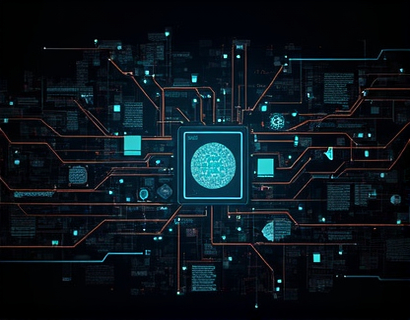Cryptocurrency Security and Privacy: Elite Protection Strategies for HNWIs, Celebrities, and Entrepreneurs in the Digital Age
In the rapidly evolving digital landscape, the security and privacy of digital assets have become paramount concerns for high-net-worth individuals, celebrities, and entrepreneurs. The cryptocurrency sector, in particular, presents unique challenges due to its decentralized nature and the increasing sophistication of cyber threats. This article delves into expertly designed security strategies tailored for these high-profile individuals, focusing on advanced defense mechanisms and operational security measures to protect their valuable digital assets and personal information.
Understanding the Threat Landscape
The cryptocurrency market attracts a diverse range of actors, from enthusiastic investors to sophisticated cybercriminals. The allure of high returns and the anonymity offered by blockchain technology make it a prime target for various cyber threats. These threats include phishing attacks, malware, ransomware, and particularly targeted attacks on individuals with significant cryptocurrency holdings. For HNWIs, celebrities, and entrepreneurs, the stakes are even higher due to their public profiles and the potential for high-value targets.
Phishing attacks remain one of the most common methods used by cybercriminals. These attacks often involve deceptive emails or messages designed to trick victims into revealing their private keys or login credentials. Given the public nature of many celebrities and the wealth of HNWIs, they are frequent targets. Malware and ransomware attacks can compromise devices and networks, leading to the theft of cryptocurrency or sensitive information. Ransomware, in particular, can lock access to critical systems until a ransom is paid, posing a significant risk to both individuals and businesses.
Advanced Authentication Methods
One of the first lines of defense against these threats is implementing advanced authentication methods. Traditional password-based security is increasingly inadequate, especially for high-value accounts. Multi-factor authentication (MFA) adds an extra layer of security by requiring users to provide two or more verification factors to gain access. This can include something the user knows (like a password), something they have (like a smartphone or security token), and something they are (like biometric data).
For added security, hardware security keys such as YubiKey or Google Authenticator can be used. These devices generate time-based one-time passwords (TOTPs) that are much harder to compromise than traditional passwords. Additionally, biometric authentication methods like fingerprint or facial recognition can provide a seamless and secure way to access accounts, reducing the risk of unauthorized access.
Secure Wallet Management
Cryptocurrency wallets are the primary storage solutions for digital assets, and their security is crucial. Hardware wallets, such as Trezor or Ledger, offer a high level of security by keeping private keys offline, making them less vulnerable to online attacks. These devices require physical presence to authorize transactions, significantly reducing the risk of remote hacking.
For those who prefer software wallets, it is essential to use well-reviewed and updated applications. Regularly backing up wallet files and seeds is also critical. Seed phrases should be stored securely, ideally in a fireproof safe or a secure digital vault. Avoid storing seeds on devices that are connected to the internet or easily accessible to others.
Network Security Measures
Protecting the network infrastructure is another vital aspect of cybersecurity for cryptocurrency holders. Using a virtual private network (VPN) can help mask IP addresses and encrypt internet traffic, making it harder for attackers to intercept data. It is important to choose a reputable VPN provider and to use strong, unique passwords for the VPN account.
Firewalls and intrusion detection systems (IDS) can also enhance network security. Firewalls monitor and control incoming and outgoing network traffic based on predetermined security rules. IDS systems detect and alert on suspicious activities, providing an additional layer of monitoring and response. Regularly updating and patching network devices and software is essential to close vulnerabilities that could be exploited by attackers.
Data Encryption and Privacy Tools
Encryption is a fundamental tool for protecting sensitive data. Encrypting files and communications ensures that even if data is intercepted or accessed unauthorized, it remains unreadable without the proper decryption keys. For storing sensitive information, using encrypted storage solutions like Encrypting File System (EFS) or third-party encryption tools can provide robust protection.
Privacy-focused browsers and search engines, such as Tor or DuckDuckGo, can help minimize online tracking and data collection. These tools help maintain anonymity and reduce the risk of targeted attacks. Additionally, using privacy coins like Monero or Zcash can add an extra layer of anonymity for cryptocurrency transactions, though they come with their own set of considerations and limitations.
Incident Response and Recovery Plans
Despite the best security measures, incidents can still occur. Having a well-defined incident response plan is crucial for minimizing damage and recovering quickly. This plan should outline steps to take in the event of a security breach, including isolating affected systems, notifying relevant parties, and initiating a forensic investigation to understand the scope and cause of the breach.
A backup and recovery strategy is equally important. Regularly backing up cryptocurrency and related data to secure, offline storage ensures that assets can be restored in case of loss or corruption. Testing the backup and recovery process periodically helps ensure its effectiveness when needed.
Continuous Education and Awareness
Cybersecurity is an ongoing process that requires continuous education and awareness. Staying informed about the latest threats and best practices is essential for maintaining robust security. Following reputable sources and communities focused on cryptocurrency security can provide valuable insights and alerts about emerging risks.
Participating in security training and workshops can also enhance knowledge and skills. Many organizations offer specialized courses on cybersecurity for individuals and businesses, covering topics from basic security hygiene to advanced threat mitigation techniques. Encouraging a culture of security awareness within personal and professional networks can further strengthen overall defenses.
Conclusion
Protecting cryptocurrency assets and personal information in the digital age requires a multi-faceted approach that combines advanced technology, robust policies, and continuous education. By implementing the strategies outlined in this article, HNWIs, celebrities, and entrepreneurs can significantly enhance their security and privacy, ensuring that their digital assets remain safe from increasingly sophisticated cyber threats. Trust in these expertly designed protection strategies to safeguard what matters most in the complex digital world.










































